Although a short stroll, the walk gives us a glimpse of the history of the Guadalquivir valley spanning over 6500 years culminating in a genuine Roman built pier.
By Nick Nutter | Updated 5 Apr 2023 | Córdoba | Walking |
Login to add to YOUR Favourites or Read Later
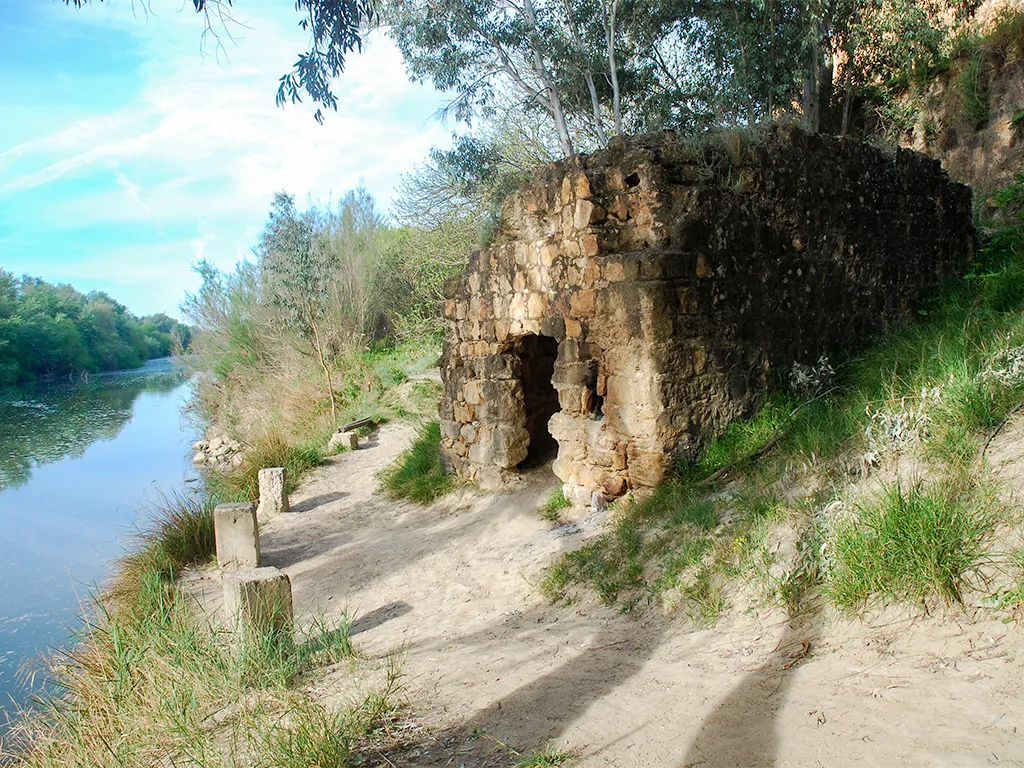
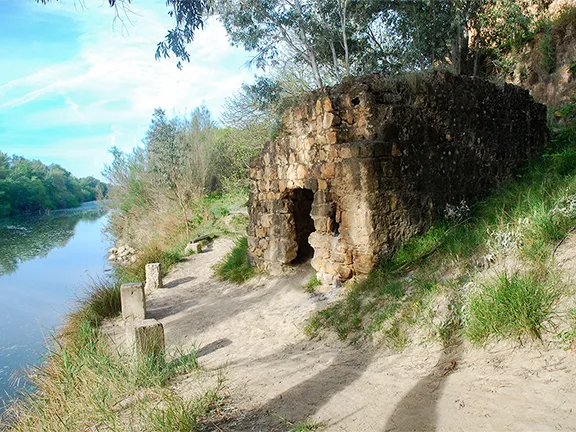
Portus Romano at Almodóvar del Rio
An easy 1 kilometre linear walk from the town of Almodóvar del Rio down to the Roman pier on the Rio Guadalquivir.
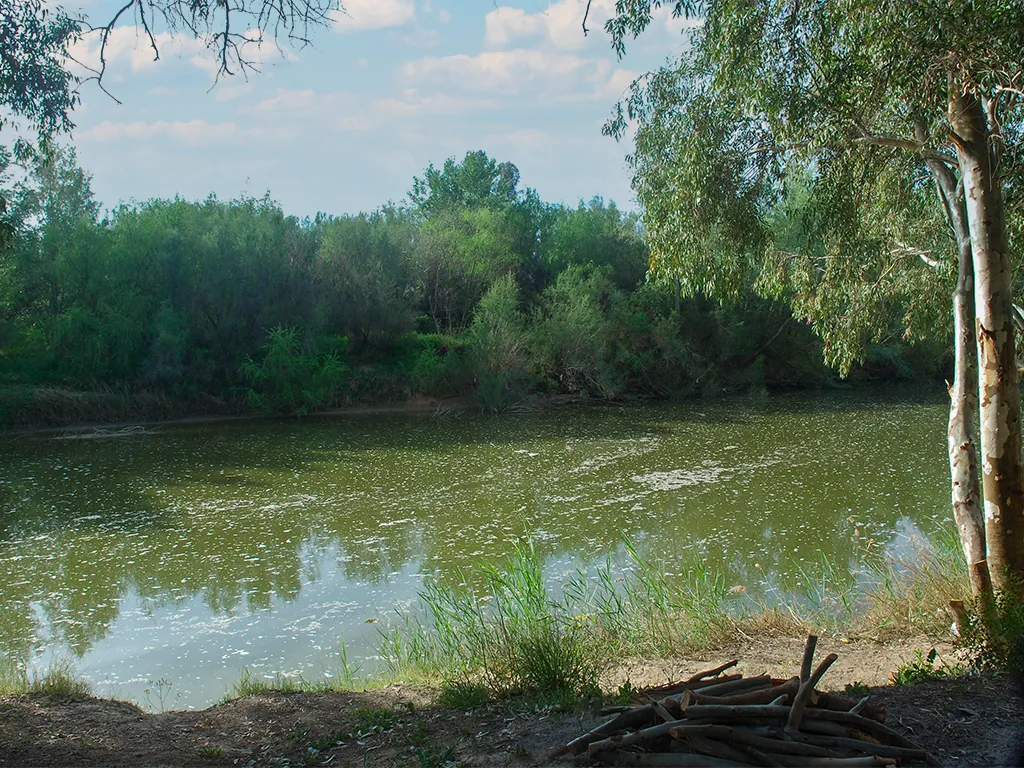
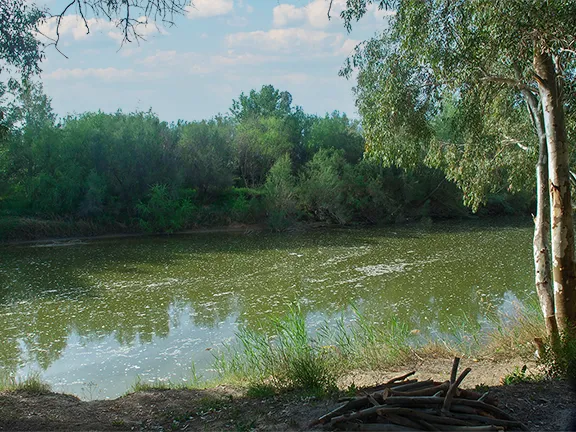
The Rio Guadalquivir Artery
The Rio Guadalquivir runs from the Sierra de Cazorla, west to Garganta and then south west to Ubeda. There it turns west again as far as Andujar where it again turns to the southwest to Córdoba. From there it continues southwest, meandering all the way to Seville from which city it heads due south through the low lying salt marshes of the Doñana Parque Nacional until it flows into the Atlantic Ocean at Sanlucar de Barrameda. Until about 1 AD, the ocean lapped the shores at Seville, the whole of the Doñana then being a huge estuary.
Settlements were established during the Neolithic period, many of them at places where tributaries entered the Guadalquivir, for instance at Palma del Rio where the Rio Genil enters the Guadalquivir. Other settlements were established at prominent places along the river’s route such as Seville, Almodóvar del Rio, Córdoba and Montoro.
The Guadalquivir was the main route between those settlements, an artery for communication and produce. Over time the major settlements became market towns, the hubs for outlying, smaller settlements and homesteads. The produce carried on the river would have been livestock, vegetables and grain, and trade goods such as pottery, woven materials and leather.
When metallic ores began to be exploited after about 2500 BC, the settlements close to the mines, particularly in the upper reaches of the river in the foothills of the Sierra Morena and centres of metal working such as at Valencina de la Concepcion just west of Seville, became ever more important, especially so when the Greek and Phoenician traders arrived off the Atlantic coast after 1000 BC. Grapes, olives, wine and oil, metallic ores and finished copper and bronze artefacts travelled downriver and exotic goods from the eastern Mediterranean and as far away as Portugal, northwest France and Britain were transported upriver. By the time the Romans arrived there was a well established trading network up and down the Guadalquivir.
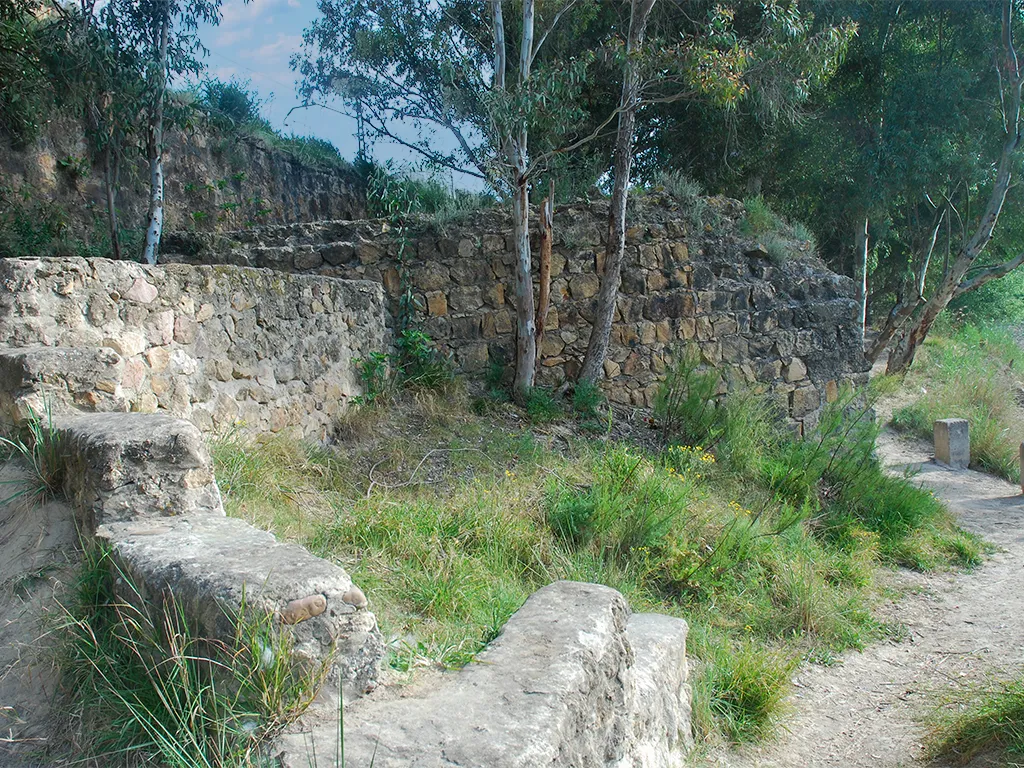
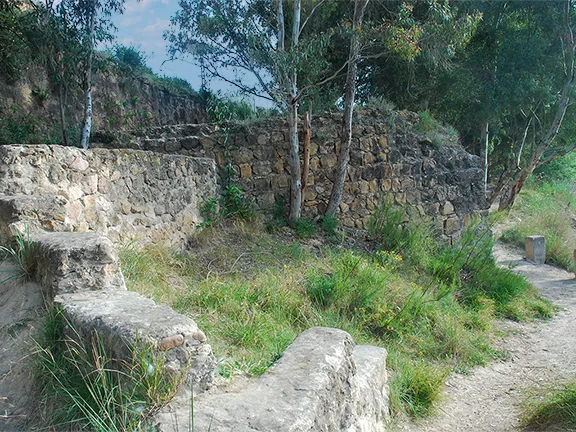
The Roman Pier at at Almodóvar del Rio
The Romans of course liked to make things better and more efficient. One of their initiatives was the building of permanent, stone piers and jetties at strategic places along the river to facilitate the storing and movement of produce. One such example is that at Almodóvar del Rio.
The walk starts at the Mirador del Ribazo in Almodóvar del Rio.
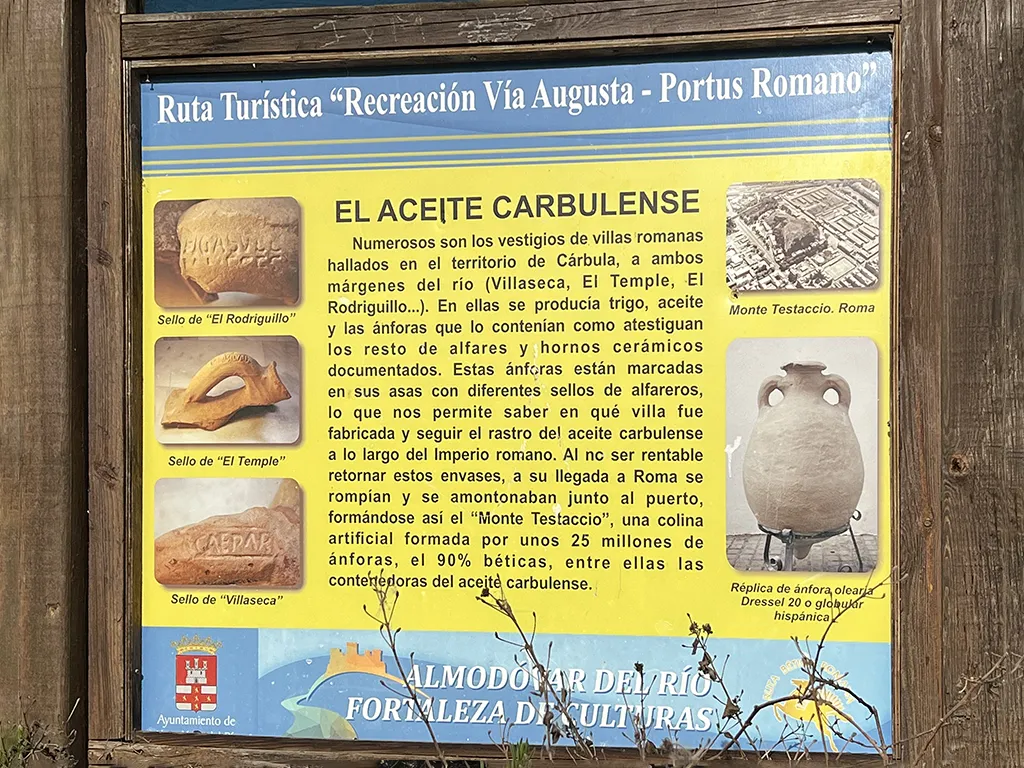
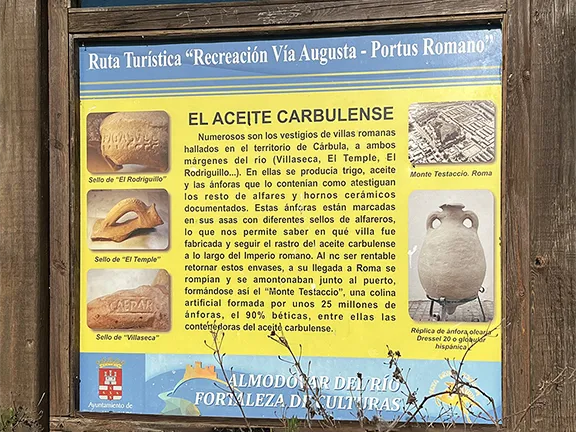
Amphorae Factory at Almodóvar del Rio
Head south down Camino de la Barca. As the name suggests, this was the original path from the Roman settlement to the river. Towards the bottom of the street you will see an information board telling you all about the amphorae that were produced in the town during the Roman era.
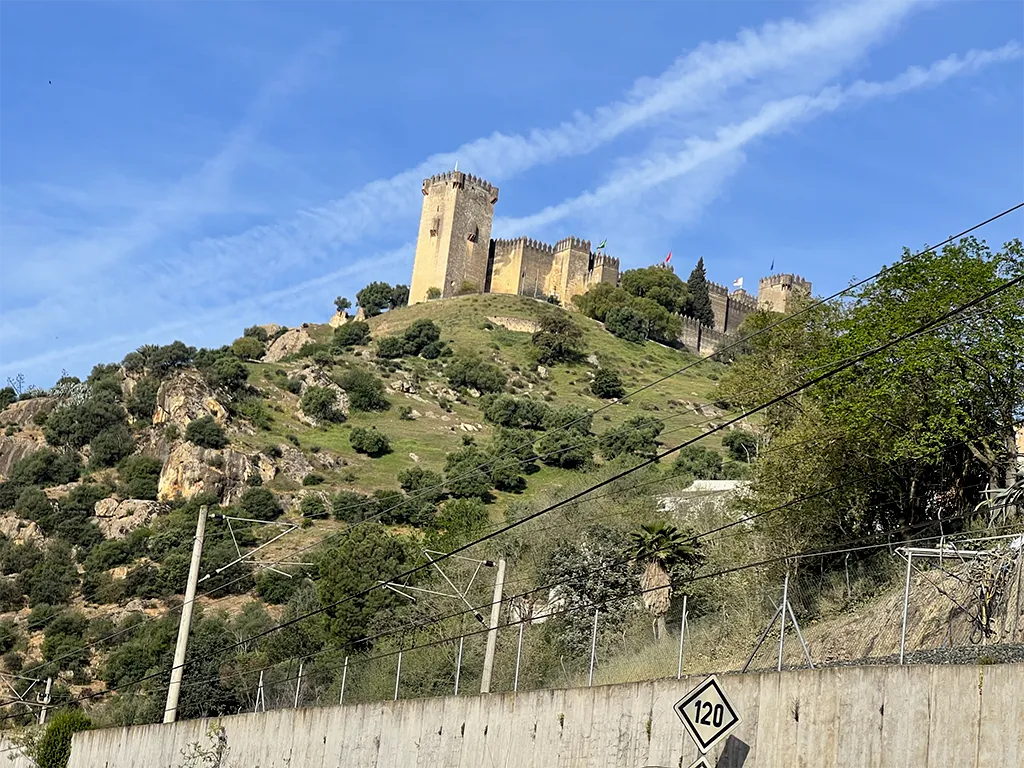
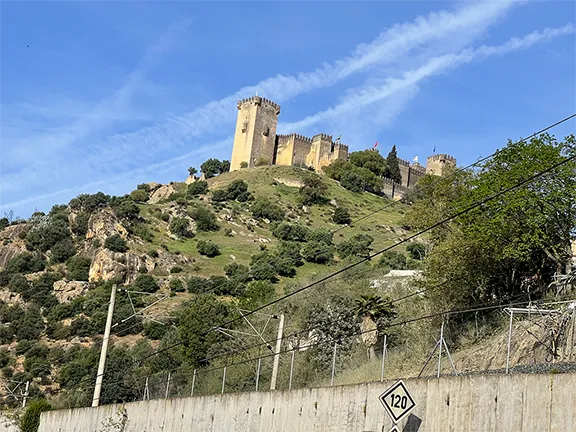
From Romans to the Modern Day
You then pass beneath the high speed railway line and the local train track. As you emerge from the short tunnel it is quite remarkable to look to your right and up. On the top of the ridge is the 8th – 19th century castle, at the bottom of the ridge the 21st century high speed line tunnels through the rock whilst the 20th century local track wends its way around the end of the ridge. Beneath your feet is an ancient path leading to the 1st century Roman pier and to your left is the Rio Guadalquivir that has been a main communication and trade route for at least 6,500 years.
The path continues alongside the river through willows, alder and eucalyptus. In late March, the spring flowers were just emerging. After about 400 metres you arrive at the Roman pier. The ruined building was at the inland end of the stone pier and quay, the remains of which are beneath your feet. It was probably used as a warehouse to shelter perishable produce prior to it being loaded onto the river boats for transportation downriver to Hispalis (Seville).
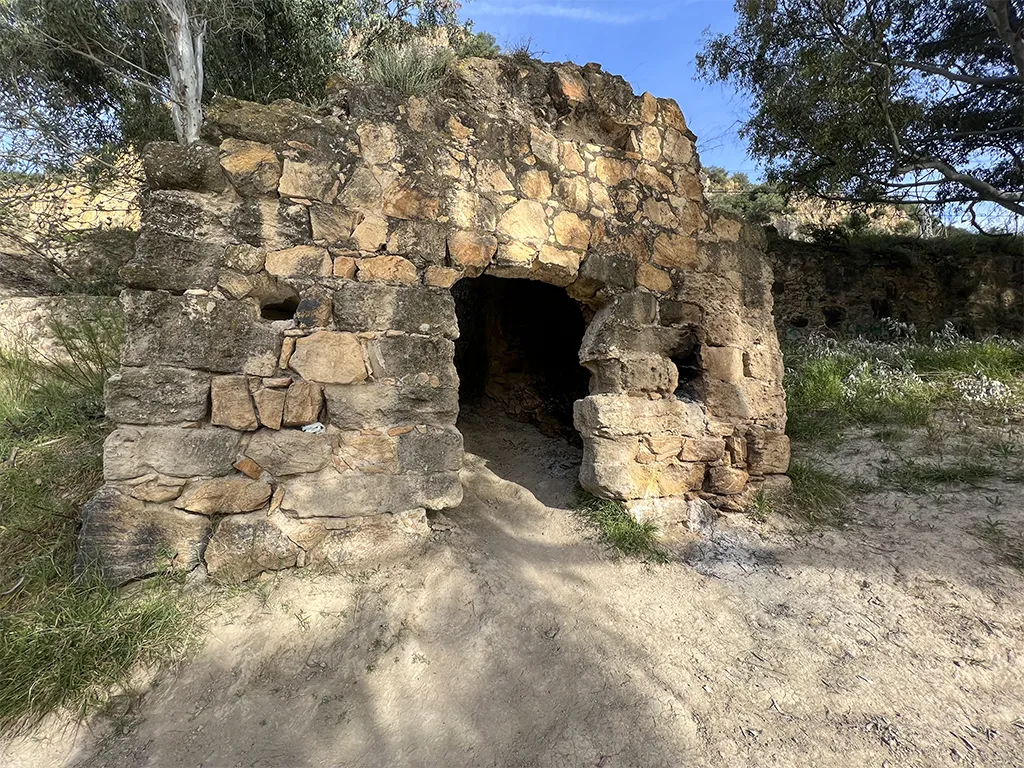
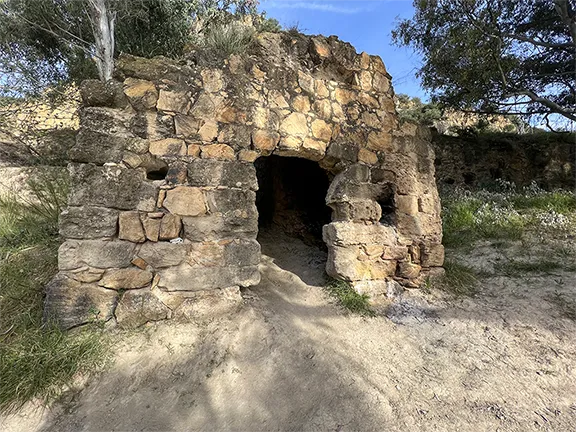
Portus Romano Warehouse
Retrace your steps to return to the town.